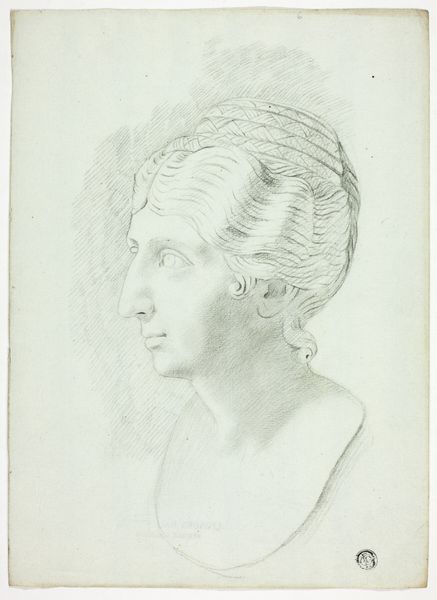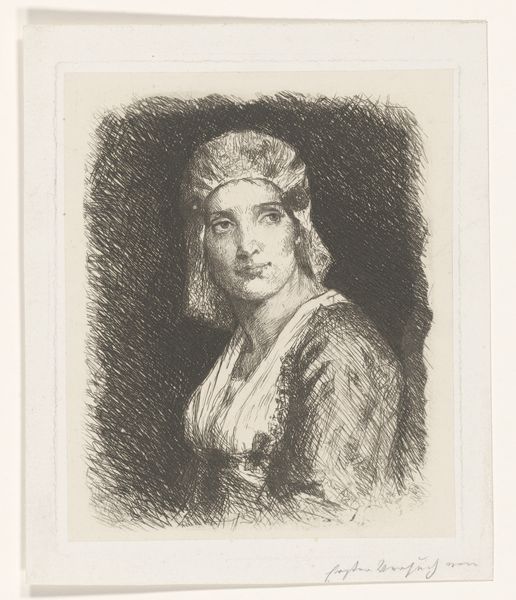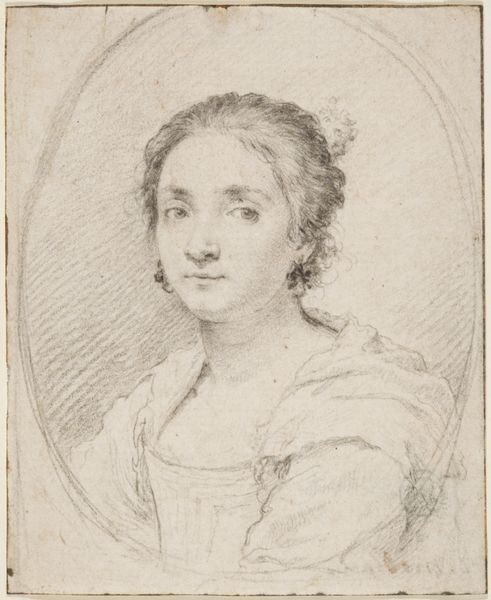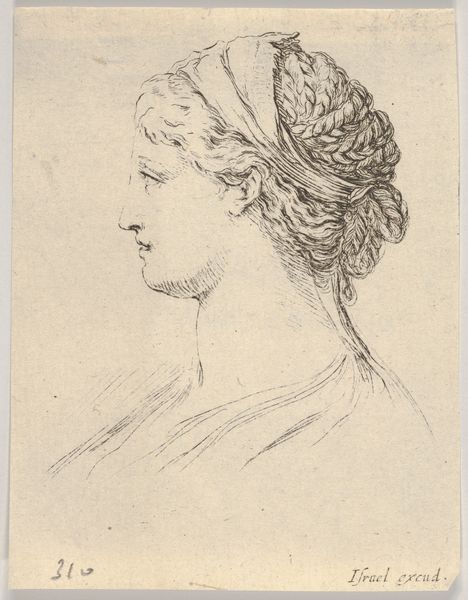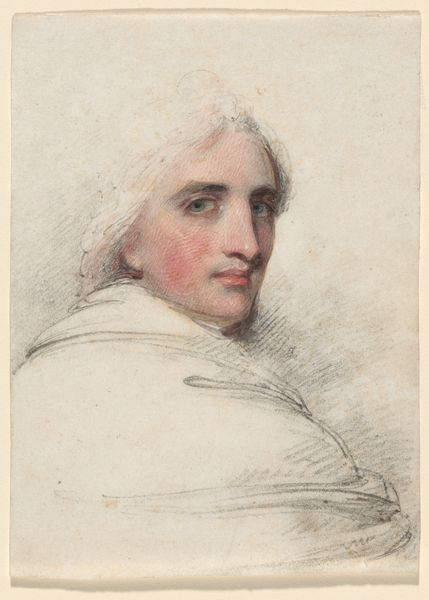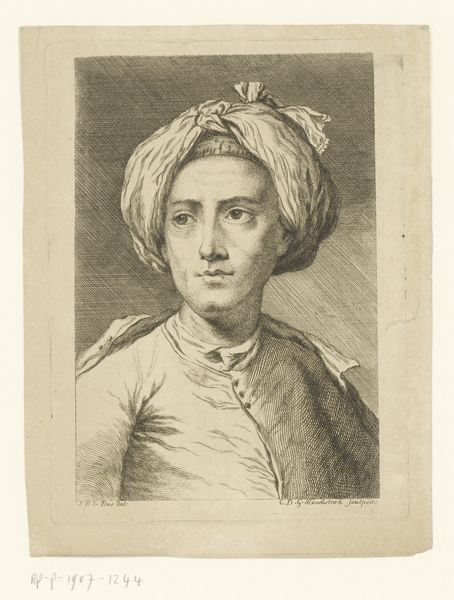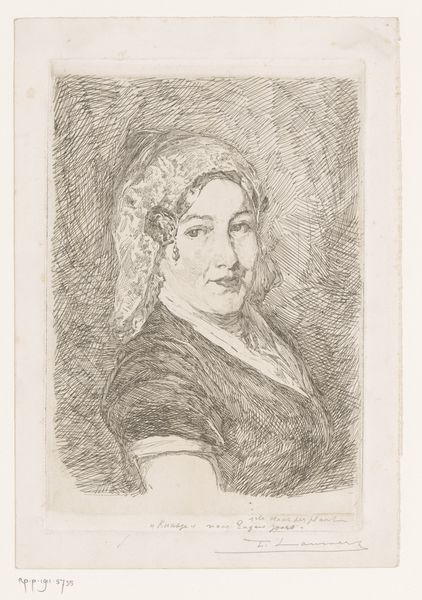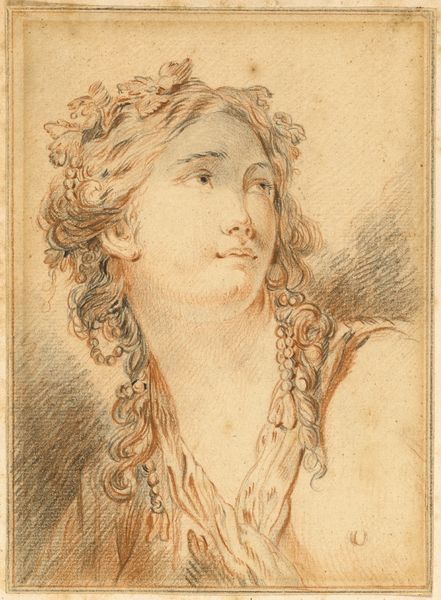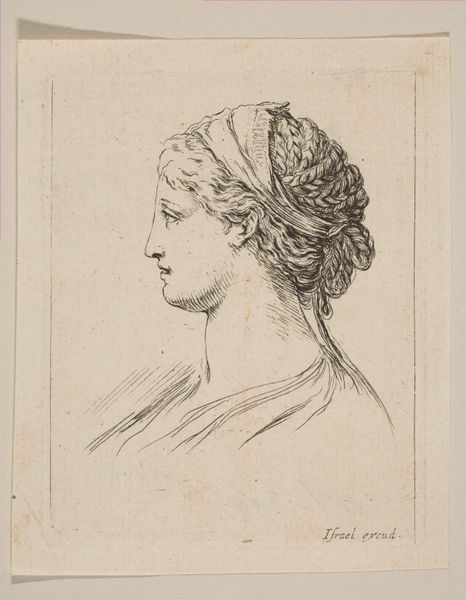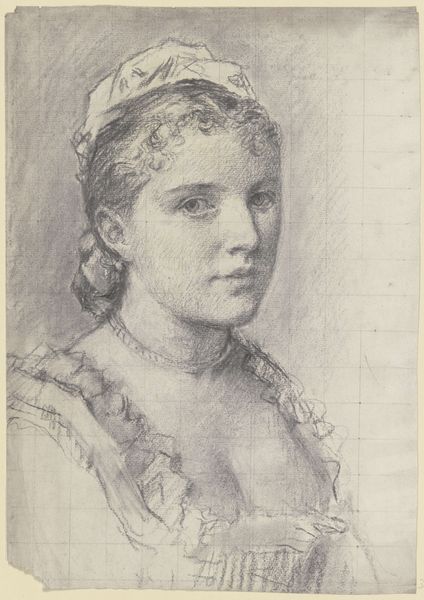
drawing, pencil, chalk
#
portrait
#
drawing
#
baroque
#
pencil drawing
#
pencil
#
chalk
Copyright: Public Domain
Curator: Welcome. Here we have Jacob de Wit's "Bust of Diana," a compelling drawing currently housed at the Städel Museum. The medium appears to be a combination of pencil and chalk. Editor: It's remarkable how light and airy the whole thing feels, despite the relatively firm, almost graphic lines of the medium. The texture is surprisingly delicate; she looks as if she's emerging from a mist. Curator: Note the elegance with which De Wit utilizes hatching and cross-hatching to create volume and shadow. The precise, refined strokes articulate the classical form and impart a sense of ideal beauty. Look at the crescent moon adorning her head—a clear symbol of Diana, the Roman goddess of the hunt, moon, and wilderness. It speaks to a symbolic visual language common in Baroque portraiture. Editor: Yes, the moon is key, isn't it? You can really feel that symbol worked carefully into the entire composition. Still, beyond her idealized beauty, there's also something approachable in her expression, in the materiality itself. You almost get the feeling that you're looking at somebody sketched by a friend as they worked away at something nearby... Curator: I understand your sentiment, but her very construction seems less about documenting someone real and more about presenting an aesthetic ideal. Consider the way the draping around her form flows almost independent of logic, serving more to highlight her classical form than as representational clothing. Her very materiality signifies her position in art. Editor: Agreed on one level—yet the intimacy comes through somehow. Think about how chalk and pencil sketches were crafted as opposed to marble. Someone sat somewhere and worked slowly to build up this image over hours of deliberate action. The human effort shows... Curator: Perhaps, and yet what truly stands out is the enduring power of form—its classical composition remains captivating regardless of social or historical context. Editor: I see it differently. To me, the medium makes it interesting, beyond a study of idealized shapes and aesthetic goals. I find that consideration makes me like this work even more.
Comments
No comments
Be the first to comment and join the conversation on the ultimate creative platform.

